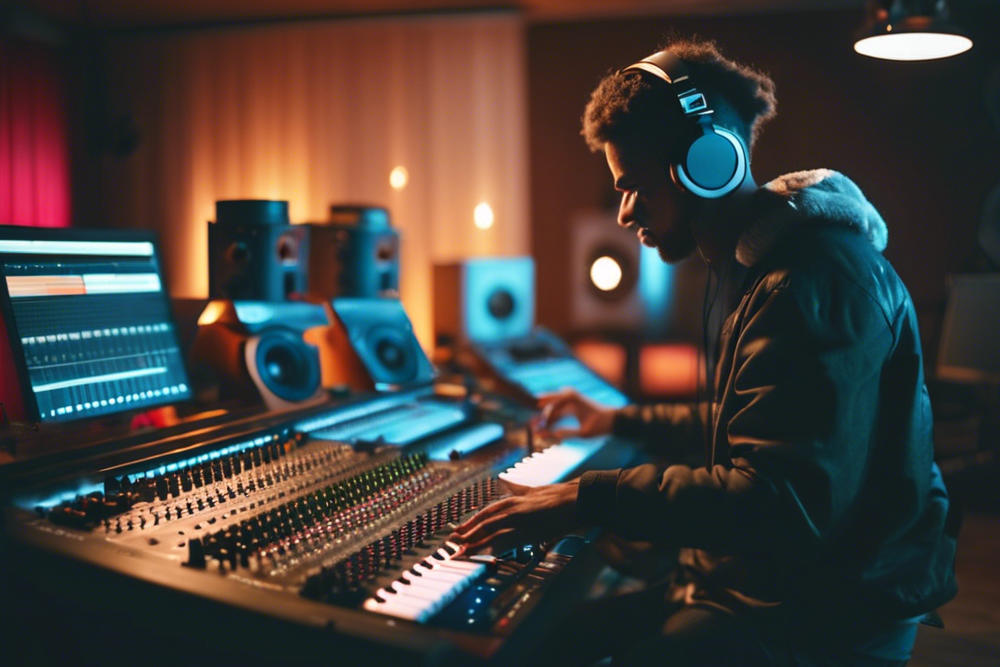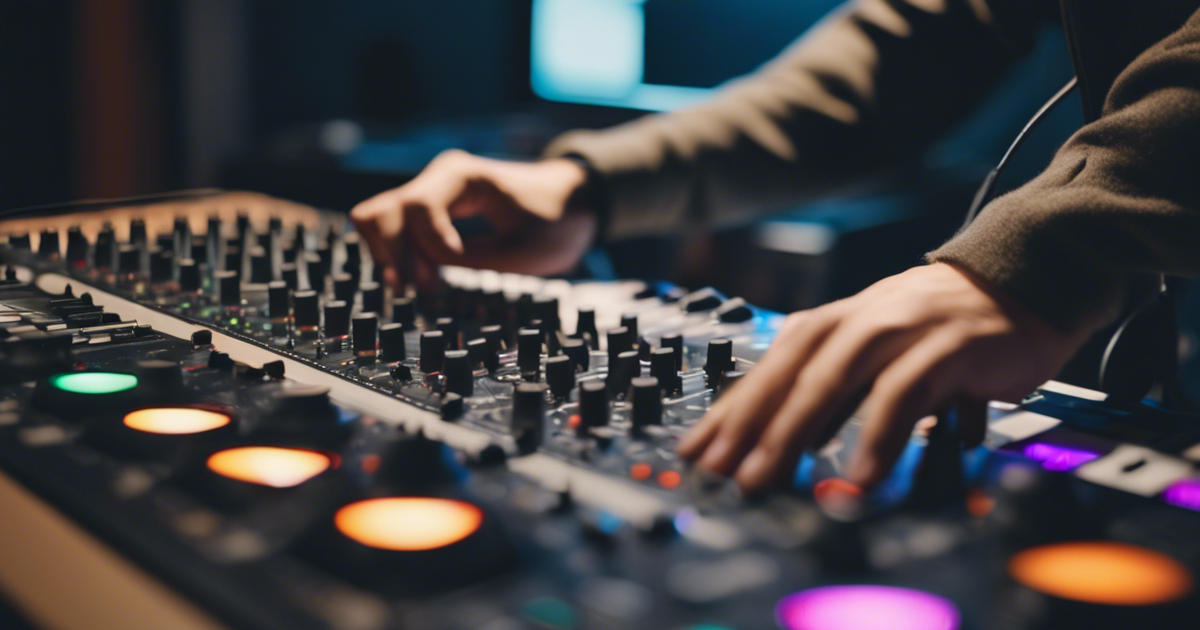Estimated reading time: 6 minutes
Curious about How to Clear a Sample? Dive into our step-by-step guide for musicians and producers, ensuring legal and creative integrity while navigating the intricate world of sample clearance.
Table of contents
Understanding Sample Clearance
Sample clearance is crucial for any musician or producer using pre-existing music samples in their new creations. This process is not just about maintaining creative integrity but also about respecting and compensating the original creators and rights holders. Whether it’s a snippet from an original song or a beat from a master recording, clearing samples correctly prevents legal issues and ensures artists support each other in the music industry.
| Aspect | Description |
|---|---|
| Purpose | Ensure legal permission to use pre-existing music samples in new creations. |
| Types of Rights | Copyright of composition (owned by music publisher or original artist) <br> Master rights (owned by record label or company). |
| Importance | Maintains creative integrity <br> Respects original creators’ rights <br> Prevents legal issues. |
| Clearance Process | Identify rights holders <br> Negotiate permissions and fees <br> Obtain license agreement. |
| Costs and Considerations | Clearance fees vary <br> Negotiations may include royalties <br> Legal complexities may arise. |
Identifying the Rights Holders
Before you can use a sample in your music, you need to identify who owns the rights. Typically, there are two main types of rights to consider:
- Copyright of the composition: This is held by the music publisher or the original artist who wrote the music.
- Master rights: These rights are held by the entity that owns the recording, usually a record label or record company.
To utilize a sample correctly, you may need to obtain permissions from both the master recording owner and the composition owner. This dual-requirement adds layers to the clearance process, making it a potentially lengthy and costly process.

Negotiating Sample Clearance
Negotiating the right to use a sample involves several key steps:
- Direct Contact: Reach out to the licensing department of the record company or the publisher to discuss the use of the sample.
- Clearance Fee and Royalties: Negotiations often involve a clearance fee and a discussion about royalties. Financial negotiations need careful handling, and sometimes hiring a professional with negotiation skills can be beneficial.
- License Agreement: If your negotiations are successful, you’ll need a license agreement that outlines how the sample can be used.
Engaging with professionals who understand copyright law and music copyright issues can be invaluable during this phase.
Costs and Legal Considerations
Clearing a sample can be an expensive process depending on the sample source, the fame of the original artists (famous artists like Keith Richards or Mick Jagger might command higher fees), and how you plan to use the sample. In some cases, you might face flat fees; in others, the cost could include ongoing royalties.
Moreover, some samples might remain uncleared samples due to high demands from copyright owners or other complexities. In these cases, seeking legal advice can help determine your best course of action.
| Aspect | Description |
|---|---|
| Factors Influencing Costs | Fame of original artists <br> Popularity of sample <br> Intended use in project. |
| Clearance Fees | Variable costs including flat fees or ongoing royalties. |
| Legal Risks | Uncleared samples can lead to lawsuits, cease-and-desist orders, and damage to reputation. |
| Seeking Legal Advice | Recommended for navigating complex legal issues surrounding sample clearance. |
| Alternatives | Cover songs, sample packs, and DAW libraries offer legal and affordable options to traditional sample clearance. |
A Video Guide to Clearing Samples Ready for Release
Alternatives to Sampling
For many independent artists and indie labels, the high costs and complex processes associated with sample clearance can be daunting. Here are some alternatives:
- Cover Songs: Instead of using the original audio, artists can re-record the music, which only necessitates obtaining the composition’s rights.
- Sample Packs: These are collections of sounds and samples that are pre-cleared for use, usually under specific conditions.
- Digital Audio Workstations (DAWs): Modern DAWs come with extensive libraries of royalty-free loops and sounds that can mimic the vibe of existing recordings without legal risks.

Exploring royalty free Sample Packs as a Alternative
Looking for hassle-free sampling options? Consider diving into the world of sample packs. These curated collections of pre-cleared sounds offer a diverse array of musical elements ready for use in your productions. From drum loops to melodic phrases, sample packs provide a convenient and legal alternative to traditional sample clearance processes.
With sample packs, you can access high-quality sounds crafted by professional musicians and producers without the complexities of negotiating rights or paying hefty clearance fees. Whether you’re looking to add texture to your tracks or spark inspiration with new sonic possibilities, sample packs offer endless creative potential at your fingertips.
Browse through various genres and styles to find the perfect samples for your project, whether you’re crafting hardstyle, trance, or techno music. With instant access to royalty-free sounds, you can focus on your music without worrying about legal or financial constraints.
Expand your sonic palette and streamline your production process with the convenience and versatility of sample packs. Elevate your music with professionally crafted sounds while avoiding the headaches of sample clearance. Dive into the world of sample packs today and unleash your creativity like never before.
Conclusion: Ensuring a Smooth Process
In conclusion, clearing a sample involves understanding who owns the music, negotiating fees and permissions, and preparing for legal and financial obligations. Remember, this process ensures that all artists – original and new – are recognized and compensated for their work. Whether you’re an established producer or an independent music artist just starting out, navigating the art of sampling effectively is essential for your career’s longevity and legality.
Related Posts
- How to get a Mechanical License: A Guide for Musicians, Producers, and Remixers
- How Much Does it Cost to Make a Music Video?
- What is a Sample in Music? Demystifying Music Sampling
- What Is a Sampler in Music and How Does It Work?
- How to Add Samples to FL Studio: Unleashing Your Creative Power
- How to use an Audio Interface? A Beginner’s Guide
- How to Sidechain? A Step-by-Step Guide to Achieve that Perfect Pump
FAQs
Sample clearance ensures you’re legally permitted to use pre-existing music samples in your work, avoiding potential lawsuits and legal complications. It also respects the original creators’ rights and ensures fair compensation for their work.
Researching copyright databases, contacting music publishers, and utilizing online resources like sample clearance services can help identify rights holders. Persistence and thoroughness are key in locating and contacting the appropriate parties.
The fame of the original artists, the popularity of the sample, and the intended use in your project all affect clearance costs. Negotiations may involve clearance fees, ongoing royalties, or flat rates, depending on various factors and agreements reached with rights holders.
Consider alternatives like cover songs, royalty-free sample packs, or utilizing digital audio workstation (DAW) libraries. These options offer legal and affordable alternatives to sampling, allowing you to create without the expense and complexity of traditional sample clearance.
Using uncleared samples can result in costly lawsuits, cease-and-desist orders, and damage to your reputation as an artist. Protect your work and respect the rights of others by ensuring all samples used in your music are properly cleared and licensed.
